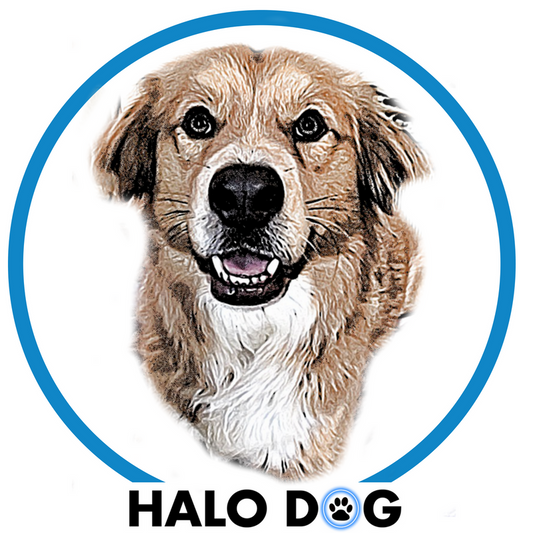
Collar vs. Harness: Which is Better for Your Dog's Breed?
Share
The age-old debate that's more heated than pineapple on pizza (and thankfully, less controversial)
Walk into any dog park and you'll see the great divide: Team Collar on one side, Team Harness on the other, with both groups absolutely convinced they've cracked the code to perfect dog walking. The truth? It's not about picking sides – it's about picking what's right for YOUR dog.
Let's settle this debate once and for all, breed by breed, because your Chihuahua and your Great Dane definitely don't have the same walking needs (shocking revelation, I know).
The Collar Camp: Classic Never Goes Out of Style
Best for: Dogs who walk nicely on leash, breeds with sturdy necks, and situations where quick identification is crucial.
The Good Stuff:
- Easy on, easy off (perfect for those dogs who treat getting dressed like it's a WWE match)
- Lightweight and comfortable for well-behaved walkers
- Great for ID tags and quick collar grabs in emergencies
- Less bulk under coats and sweaters
- Perfect platform for LED lights during those early morning and late evening walks
The Not-So-Good:
- Can put pressure on the trachea if your dog is a puller
- Not ideal for dogs with respiratory issues
- Some escape artists can slip right out
The Harness Squad: Distributed Pressure for the Win
Best for: Pullers, dogs with breathing issues, small breeds, and anyone training a puppy to walk properly.
The Perks:
- Distributes pressure across the chest instead of the neck
- Better control for strong pullers
- Reduces risk of tracheal damage
- Great for dogs with back or neck issues
- Harder to escape from (sorry, Houdini dogs)
The Drawbacks:
- Can encourage pulling in some dogs (counterintuitive, right?)
- More complicated to put on
- Can cause chafing under the arms if ill-fitting
- Bulkier under clothing
Breed-Specific Breakdown: The Ultimate Guide
Flat-Faced Breeds (Bulldogs, Pugs, Boston Terriers, French Bulldogs)
Winner: Harness, hands down
These adorable snorty faces already have compromised airways – adding collar pressure is like asking someone with a stuffy nose to breathe through a straw. A well-fitted harness takes pressure off their already-challenged respiratory system.
LED collar hack: If you love the visibility of light-up collars for evening walks, try a harness with LED attachments or use an LED collar loosely as a secondary safety measure (never as the primary walking attachment).
Long-Necked Elegants (Greyhounds, Whippets, Italian Greyhounds)
Winner: Wide collar or martingale
These graceful noodle-necks have delicate tracheas and can easily slip out of regular collars. A wide collar distributes pressure better, while a martingale prevents the great escape act.
Special consideration: LED collars work beautifully on these breeds because their long necks provide perfect visibility for the lights, making them look like elegant, glowing gazelles during evening runs.
Small but Mighty (Chihuahuas, Yorkshire Terriers, Maltese)
Winner: Harness (but collar works too)
These tiny dynamos often have delicate tracheas that can be damaged by pulling on a collar. Plus, they're notorious for thinking they're actually Great Danes and trying to take on the world – a harness gives you better control.
Pro tip: LED collars are fantastic for small dogs because they make them visible to bigger dogs and humans who might not see them in low light. Just make sure the collar is ultra-lightweight.
The Gentle Giants (Great Danes, Mastiffs, Saint Bernards)
Winner: Depends on their leash manners
Well-trained gentle giants can wear collars beautifully, but if they pull... well, that's a lot of force concentrated on their neck. A harness might be safer during training phases.
LED advantage: These big dogs benefit hugely from LED collars because they're visible from much greater distances – think lighthouse beacon rather than birthday candle.
The Pullers (Any dog that thinks "heel" is just a part of your foot)
Winner: Harness, specifically a front-clip or no-pull design
If your dog pulls like they're training for the Iditarod, protect their neck with a harness. Your shoulders will thank you too.
Swimming Breeds (Labs, Golden Retrievers, Portuguese Water Dogs)
Winner: Collar for everyday, harness for water activities
Collars are easier to clean and dry after water adventures, but if you're doing water training or your dog is a strong swimmer who might need assistance, a harness gives you better control.
Water-friendly LED note: Look for waterproof LED options if your water dog loves evening swims or beach walks.
Escape Artists (Huskies, Beagles, basically any dog with "selective hearing")
Winner: Martingale collar or escape-proof harness
These Houdini dogs require special anti-escape technology. A martingale collar tightens slightly when pulled but won't choke, while a well-fitted harness is nearly impossible to back out of.
The Hybrid Approach: Why Not Both?
Here's a radical idea: you can use both! Many dog parents use:
- Collar for everyday wear: ID tags, house wear, and well-behaved neighborhood strolls
- Harness for training and adventures: Hikes, training sessions, or anywhere you need extra control
This is especially great if you've invested in an LED collar for visibility – wear it as a safety collar while using a harness for leash attachment during training phases.
Special Situations: When the Rules Change
Puppies: Start with a collar for ID purposes, but use a harness for leash training. Puppies don't know how to walk properly yet, and protecting their developing trachea is crucial.
Senior Dogs: Arthritis and other age-related issues might make a harness more comfortable, especially if they're developing a stiff neck or back problems.
Reactive Dogs: A harness often gives you better control in situations where your dog might lunge or react to triggers.
Show Dogs: Collars are typically required in the show ring, so show dogs need to be comfortable and well-trained in collar use.
The LED Factor: Modern Visibility Needs
With more people walking dogs during dawn and dusk hours (thanks, work schedules!), visibility has become a major safety concern. LED collars have revolutionized dog safety, but they work differently on different breeds:
- Thick-coated dogs: May need brighter LEDs to show through their fur
- Active dogs: Need durable, weather-resistant LED options
Making the Decision: Your Personal Checklist
Ask yourself:
- Does my dog pull on walks?
- Do they have any breathing issues?
- Are they an escape artist?
- What's their neck sensitivity like?
- Do we walk during low-visibility hours?
- How much control do I need during walks?
The Bottom Line
There's no universal right answer because there's no universal dog. A well-trained Golden Retriever might thrive with a simple collar and LED lights for evening visibility, while a reactive rescue might need a specialized harness for both comfort and control.
The best choice is the one that keeps your dog safe, comfortable, and happy – whether that's a classic collar, a high-tech harness, or a combination of both. After all, the perfect walking gear is whatever gets you and your pup out there enjoying those daily adventures together.
Remember: The best collar or harness is the one your dog forgets they're wearing – it should be comfortable enough that they can focus on the important stuff, like sniffing every single blade of grass and making friends with every person they meet.
Quick Decision Tree:
- Pulls or has breathing issues? → Harness
- Well-trained and calm walker? → Collar works great
- Need visibility for early/late walks? → LED collar or LED harness attachments
- Escape artist tendencies? → Martingale collar or secure harness
- Still not sure? → Try both and see what works best!








